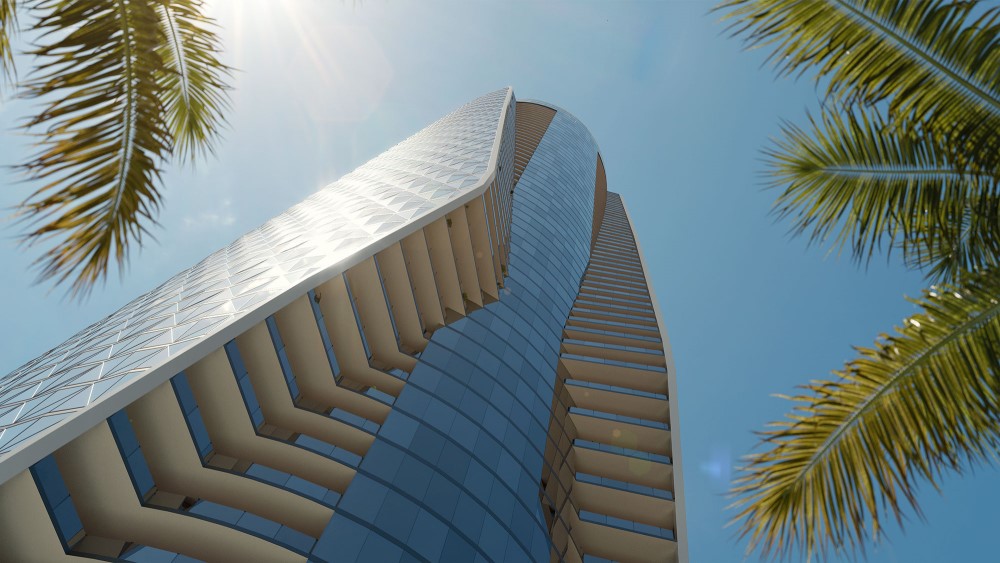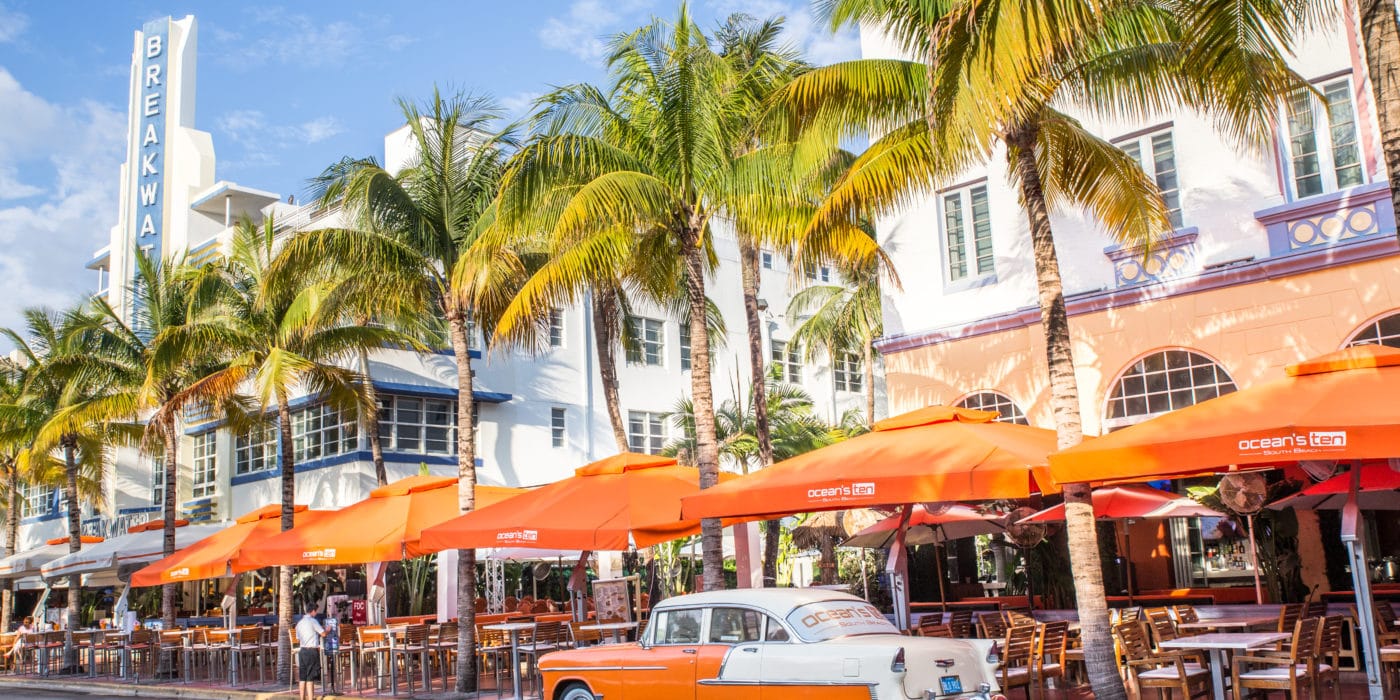South Florida is experiencing a period of remarkable growth. In downtown Miami, ground is being broken for what will become Florida’s tallest office tower, boasting 1.5 million square feet of space, yet to be occupied by firms that have no prior presence in the state. Additionally, condo towers with prestigious St. Regis and Waldorf-Astoria branding are in the works for the same area. While their completion is several years away, the units that are yet to be built have already been predominantly reserved with buyer deposits. This phenomenon isn’t limited to Miami alone. Further north in West Palm Beach, the arrival of financial giants such as Goldman Sachs and BlackRock has driven office rents to record highs during the second quarter of this year. New workplaces offering private terraces and access to yacht charters are now rising along the city’s waterfront, while developers plan condos to accommodate the influx of future employees. Nick Bienstock, CEO of New York City office landlord Savanna, commented, “We’ve got four or five thousand people coming to West Palm Beach who have not yet arrived.” In a bid to capture a share of this market, Savanna is making its inaugural investment in Florida – a 275-unit condo development known as Olara – as part of the larger initiative to build 3,000 new homes across West Palm Beach.
More than three years into a massive migration of both money and people to the Sunshine State, Florida’s property market continues to outperform nearly all other regions in the US. What initially began as a warm-weather haven from pandemic restrictions has now evolved into a destination catering not only to the current influx of professionals but also doubling down on the premise that even more are yet to come. According to Ken H. Johnson, a housing economist with Florida Atlantic University’s College of Business, “The old, 1980s Florida is disappearing. We’re just not getting those retirement-community, fixed-income folks we used to. We’re getting people with significant incomes, and they’re usually bringing work and jobs with them.” Indeed, Florida ranks as the No. 1 destination for professionals aged 25 to 36 earning at least $200,000, as per a recent report by financial advisory SmartAsset. Crucially, high-earning individuals relocating to Florida have outnumbered those departing by more than three-to-one in recent years. Along with youth and job opportunities, newcomers are arriving with significant cash reserves, purchasing homes in a state where supply simply can’t keep up with demand.
As a result, the Florida real estate market consistently ranks at the top of various superlative lists. For example, of the 10 most overpriced housing markets in the country, seven are located in Florida, according to a monthly analysis co-published by Prof. Johnson. This means that Florida buyers are paying the highest premiums for their homes nationwide when compared to price averages over the past 27 years. In August, Miami’s median home price rose by 14.6% year-over-year, according to brokerage Redfin, and Fort Lauderdale saw a 5.3% increase – all while downtown Fort Lauderdale’s population has surged by 80% since 2010. These spikes in property values coincide with declines in other much-hyped “boom-towns” of the pandemic era. For instance, home prices in Phoenix fell by 2% in August, Fort Worth dropped by 2.7%, and Austin, which previously ranked at the bottom of Redfin’s price growth list, plunged by 7%. To make matters more concerning, these numbers follow double-digit corrections in both Phoenix and Austin just a few months prior. Eli Beracha, director of the Hollo School of Real Estate at Florida International University, remarked, “Texas is different from Florida even though both are identified as tax-free states. Florida is viewed as a tropical vacation place – where you can also live. People just don’t go on vacation to Dallas.”
During the pandemic, Florida received the largest influx of wealth in the US. In 2021 alone, newcomers boosted the state’s taxable income by $39.3 billion, which is more than three times the amount that second-place Texas saw, according to the Economic Innovation Group, a DC-based think tank. Census data released in September suggests that this growth will continue. Florida’s population grew by 2.13% – the highest jump in the US – between 2021 and 2022. Jonathan Miller, president of real estate appraisal firm Miller Samuel, stated, “Florida is being reset and restructured in a way that no one else is.” What sets this current cycle apart is that it’s happening without the massive international demand that fueled previous Florida housing and population booms. So, what is driving it instead? “New Yorkers are the new foreign buyers,” Miller noted, referencing the nearly 130,000 Empire State residents who relocated to the Sunshine State in 2021 and 2022 alone. Many of these new residents split their time between cities while making Florida, a no-income-tax state, their primary residence. Consequently, there’s a boom in furnished Miami condos designed for owners to easily rent out while they’re away. Florida’s appeal to northerners is evident. Frustrated with big-city crime and quality-of-life issues, and enticed by tax benefits and the prospect of beachfront home offices, the state provides a ready-made solution to many of urban America’s most pressing problems. Nitin Motwani, managing partner of Miami Worldcenter Associates, the master developer of the 27-acre Miami Worldcenter district, a $6 billion project spanning 10 city blocks, remarked, “It’s just a different way people are choosing to live, and Miami is a big beneficiary of that.” Motwani shared that he regularly receives calls from executives seeking logistical assistance for their move south. “Sometimes it’s just questions like ‘Where should we look?'” Motwani said. “Other times, it’s discussions about talent, or ‘Can you connect me with another C-suite executive who has made the move?'”
This guidance is in high demand. According to media reports this year, top Miami-area schools have become so crowded that billionaire newcomers are literally writing multimillion-dollar “charity” checks to secure placements for their children. From every angle, Florida’s real estate market is outperforming expectations. While this may benefit investors, the lack of affordable housing has become a concern for policymakers, who are striving to incentivize the development of more reasonably priced apartments. A recent report by the Florida Policy Project reveals that over 1 million residents statewide are spending more than 50% of their income on housing. Rising homeowners’ insurance premiums are only exacerbating the problem. According to a recent study by the Florida Apartment Association, Florida will need approximately 500,000 new housing units by 2030 to alleviate costs and meet future demand. Not surprisingly, Florida’s housing shortage has translated into some of the highest price increases in the nation. Miami’s median home and condo prices have climbed by 64% since mid-2019, according to Miller Samuel. In comparison, Los Angeles saw a 14% increase during the same period, and Manhattan even experienced a 1.2% decline. Price gains were robust outside Miami as well, with a 62% increase in Boca Raton and a 59% jump in Delray Beach. In finance-focused Palm Beach, residential property has been turbocharged by the pandemic, rising 141% since the second quarter of 2019, according to Miller Samuel. While prices are beginning to stabilize, this year has already seen at least five homes trade for over $50 million, including a $155 million compound sold by the widow of Rush Limbaugh. “Forty years ago, Palm Beach was a place where old people went for their last few years, and that’s absolutely not the case now,” noted Savanna’s Bienstock.
Similar to residential developers, commercial property investors are also helping South Florida maintain its real estate edge, pouring more than $63 billion into the three regional counties in 2021 and 2022, according to data by MSCI Real Assets. In Miami, New York’s Related Cos and Swire Properties are making the highest-profile bet yet that Miami’s ongoing influx of human and economic capital is both permanent and continuous. The developers are currently constructing Florida’s tallest commercial tower, the 1.5 million-square-foot, 1,000-foot-tall One Brickell City Centre in downtown Miami. Developments like One Brickell are crucial for Miami’s continued growth. Corporate relocations surged by 33% last year, and the total assets managed by financial firms in Miami reached $390 billion in August 2022, up from $75 billion in 2019, according to the city’s Downtown Development Authority. “The missing link is quality office space, and that’s the gap we’re aiming to fill,” said David Martin, senior vice president of retail and commercial leasing for Swire’s US operation. Office vacancies stood at just 10.4% in the second quarter of this year in Miami-Dade County, according to Colliers, compared to a record high of 17.8% in Manhattan and over 30% in San Francisco.
Miami’s Downtown is now also more easily accessible to Boca Raton and Palm Beach thanks to the new $6.2 billion Brightline high-speed rail service. Other New York-based developers, including real estate titan Harry Macklowe, Chrysler Building owner Aby Rosen, and the Naftali Group, are all planning their debuts in Florida. “There is still a migration of people,” says billionaire developer Richard LeFrak, who has more than doubled his South Florida staff since the pandemic. “It’s not as dramatic as it was during COVID, but it’s still a steady stream.” For the time being, signs indicate that newcomers will continue to arrive both in the short and long term. Miami’s current metropolitan area population of 6.26 million is expected to grow an additional seven percent by 2030. This could help Florida withstand the housing downturn that many experts fear, given the soaring mortgage rates and ongoing inflation in the US. According to a recent study by the University of Florida’s GeoPlan Center, the state’s population could surge to 33 million from its current 21.7 million by 2070.
“Our economy here in Florida is where California was circa the late 1960s when it really started to expand,” Prof. Johnson said. “There was always the weather and the saltwater, but now the professional opportunities are here as well. This expansion is going to go on for quite some time, and we’re going to be talking about housing for quite some time.”
Source: New York Post (By Oshrat Carmiel, Publisher of Highest & Best)

